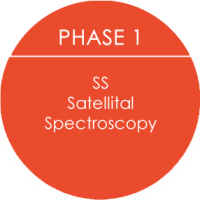More than 30 years of research and work on electromagnetism allow us today to have a technology to prospect for water tanks.
The WFT™ is a technology, remote exploration based on the identification of electromagnetic interference caused by the same water tanks and through the spectral signature, called resonant frequency, in the deep blue range and the ultraviolet spectrum identifies the fluids within these anomalous areas.
Stages of technology:
Applications of technology:
EXPLORATION
EXPLORATORY AREAS: La WFTTM WFM is the starting point for the exploration of areas not previously studied. When performing the present spectroscopy leaflets are displayed in the area, discarding the areas where the presence of water is not evidence.
Reinterpreting DATA: In areas where studies have already been conducted with the traditional tools, but there is uncertainty as to the areas for which the interpretation of data can be complicated, the WFTTM in these cases is of utmost help to elucidate the presence of water.
PRODUCTION
AQUIFER EXISTING: In the already developed aquifers, where reengineering is required to locate the areas of water accumulation that have not yet been located and also check for water in the structures are not known.
DRILLING
VIRTUAL DRILLING: A verification study will help forecast the WFTTM deposits present, its depths, thicknesses and approximate coordinates background where to direct drilling.
¿Why the WFT™? :
- Ensures increased success in drilling campaigns.
- Considerable reduction of the time for information.
- Identification of groundwater due to salinity.
- Friendly to the environment and communities.
- It does not require permits and licenses.
- Lower costs to traditional methods.
- Remote exploration anywhere in the world.
- Ante verification coordinate drilling.
Frequent questions:
It is a graphical representation of electromagnetic anomalies that show the presence or absence of the material sought in the study area.
Dedicated to geophysical studies Georesurs-type P and DK satellites are used.
The acquisition is from passive platforms that acquire multispectral information specific study area.
A metadata with multispectral information tied to the coordinates of the investigated area is obtained.
In a laboratory of Geophysics satellite data it is transferred to a satellite plate in which the digital information is converted to analog, making it susceptible to be excited in a spectrometer and analyzed centimeter by centimeter.
The information has a high degree of assertiveness, cataloged by 65% as an average, depending on the scale used.
It is optional, depending on the technical task and the amount of information held in the study area.
For Phase 1, remote, between 15 and 30 days, depending on the scale and the area in question. For phases 2 and 3, the field, between 1 and 6 weeks to tour the area, depending on the topography and specific conditions of the area, after acquiring the data one month to deliver the final report.
Geophysical method FSPEF delimits the extent of the electromagnetic anomaly and the VERS surface and determines the depths, thicknesses and number of intervals of the polarized rock.
It is void, does not require explosions, nor noise, there is no impairment to the flora and fauna or damage to property.
For the use of technology not require permits or licenses.



